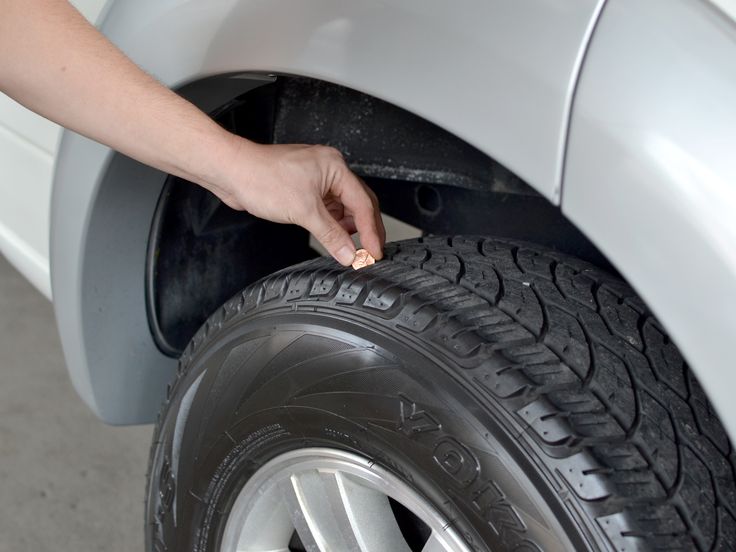As a long-time vehicle owner, you understand the importance of replacing your tires when they become too worn out to provide adequate traction. But your tires can become compromised even before they begin to bald. One of the most common reasons tires may wear out prematurely is the development of dry rot.
What Is Tire Dry Rot?
Unlike dry rot that may affect the wood in your home, tire dry rot is not caused by an organic growth and can’t spread from one tire to another. The term dry rot is used to describe a specific type of tire decay that can occur as a tire ages or is regularly exposed to harmful substances and conditions. We’ll discuss what this type of decay looks like in the next section.
Once dry rot appears in a tire, you only have a short period of time to attempt to repair the damage before the tires become unsafe for driving. Minor dry rot can be addressed by a professional using a tire sealant.
Tires with advanced dry rot must be replaced. Dry rot allows air to escape the tire, making it difficult or even impossible to keep the tire properly inflated. Dry rot can also cause unnatural rubber expansion while driving that actually breaks the tire apart. Tires with dry rot are much more likely to develop leaks, holes, and blow outs. In extreme cases, the tread may separate from the rest of the tire entirely.
What Does Dry Rot Look Like?
Tire dry rot is also known as sidewall cracking. As the term suggests, dry rot is primarily characterized by cracks in the tire rubber. If one or more of your tires has developed dry rot, you may notice the following warning signs:
 These cracks can affect your car’s handling, even if your tread still has adequate depth overall.
These cracks can affect your car’s handling, even if your tread still has adequate depth overall.Inspect your tires for signs of dry rot at least once a year. Plan to inspect your tires in the early spring or early fall since winter and summer conditions can contribute to the development of dry rot.
If you notice signs of dry rot, have your tires evaluated by a tire and wheels professional to determine whether or not your tires are safe to drive with.
What Causes Dry Rot?
Because dry rot cannot be repaired, it’s important to reduce your tires’ risk of developing cracks.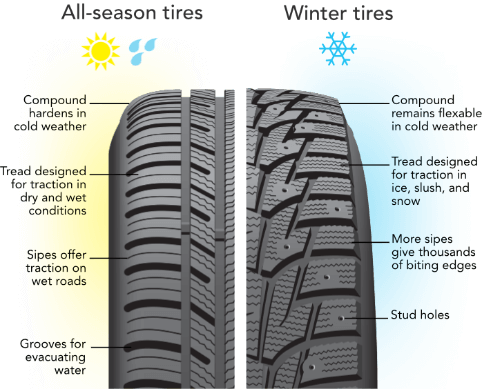 The first step to preventing dry rot is to invest in new, high-quality tires each time you replace older tires. These tires are less likely to develop premature dry rot.
The first step to preventing dry rot is to invest in new, high-quality tires each time you replace older tires. These tires are less likely to develop premature dry rot.
To protect your tires over time, pay attention to the substances and conditions your tires are exposed to. Avoid the following:
To keep your tires healthy, park your vehicle out of direct sunlight in an area with mild temperatures whenever possible. If you park in a garage, keep chemical solutions, heaters, and electrical equipment away from your car.
If you park outdoors, pay attention to the weather. You may want to cover your entire car or use tire covers to minimize the effects of temperature fluctuations.
You may want to cover your entire car or use tire covers to minimize the effects of temperature fluctuations.
As you travel, leave your car in parking garages or in underground parking as often as possible rather than parking on a curb.
For cars that are driven infrequently, such as seasonal vehicles, RVs, and antique cars, follow the guidelines found in our previous blog, “How to Take Care of a Car That Is Rarely Driven.”
Use this information to ensure that when you get in your car, you know your tires can handle taking you wherever the road ahead may lead.
Have your tires succumbed to dry rot? Find high-quality tires that are perfect for your vehicle type at Evans Tire & Service Centers.
Posted by Benjamin Jerew Know How
In 2022, over 342 million passenger tires were shipped in the United States, according to the U.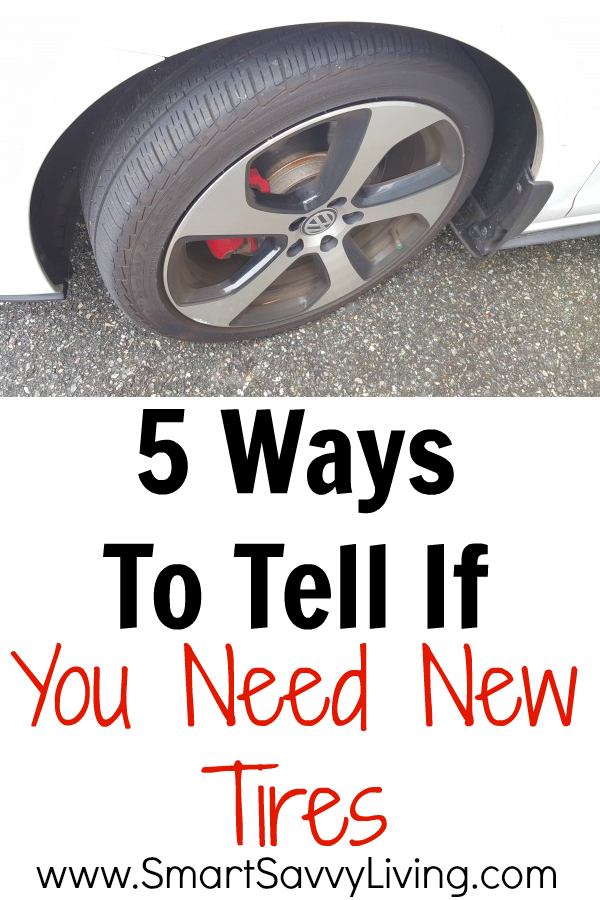 S. Tire Manufacturers Association. Given that Americans drive over three trillion miles every year, according to the Department of Transportation, those millions of tires are needed to replace worn, damaged, aged or dry-rotted tires. When considering tire replacement for your vehicle, whether they’re winter tires that have been in storage or tires you got from a friend, it’s important to know how to tell if tires are dry rotted. If a tire dry rots, tire components, such as the tread, sidewalls, belts or bead wire, may separate from each other. Tread separation or sidewall blowout at highway speeds could result in a crash. Here’s how to determine if your tires are safe to drive on.
S. Tire Manufacturers Association. Given that Americans drive over three trillion miles every year, according to the Department of Transportation, those millions of tires are needed to replace worn, damaged, aged or dry-rotted tires. When considering tire replacement for your vehicle, whether they’re winter tires that have been in storage or tires you got from a friend, it’s important to know how to tell if tires are dry rotted. If a tire dry rots, tire components, such as the tread, sidewalls, belts or bead wire, may separate from each other. Tread separation or sidewall blowout at highway speeds could result in a crash. Here’s how to determine if your tires are safe to drive on.
Tires age as soon as they’re manufactured, ideally lasting up to 10 years, but shipping, handling and exposure accelerate aging and dry rot, shortening their life. Dry rot itself is a condition that affects the material that the tire itself is made of, so it isn’t a foreign substance that can be removed like mold.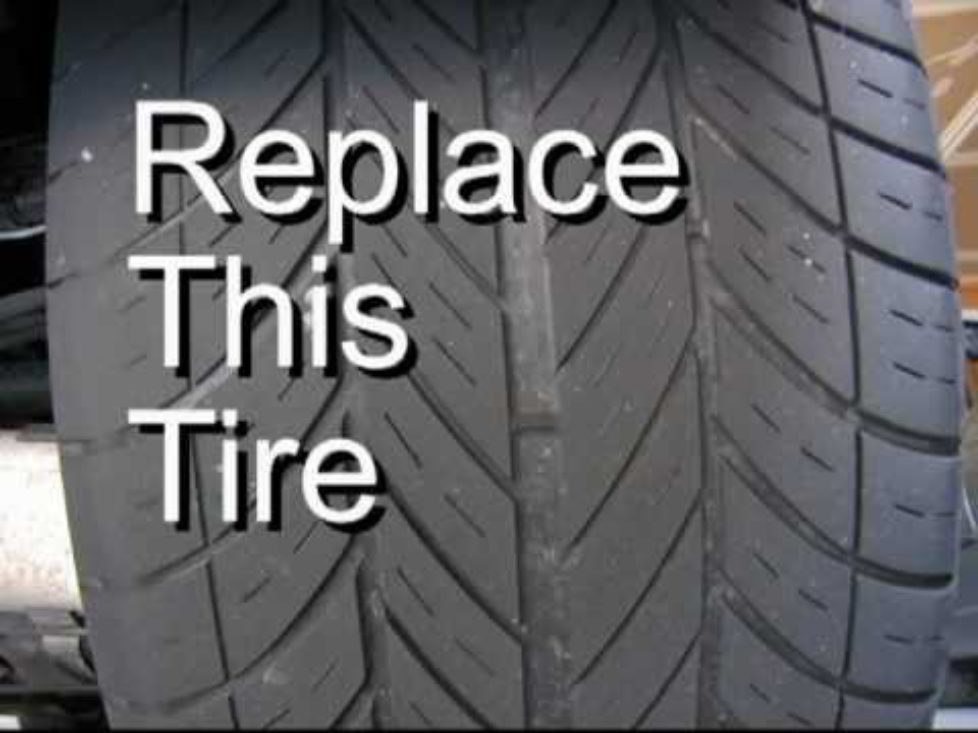 Obviously age is a major factor for dry rot in tires and cannot be mitigated, but exposure to ultraviolet (UV) light can also dry rot tires. Sunlight (especially if you live in a place with warm weather) is a common cause of tire sidewall dry rot damage. If you ever drive by an RV camp ground you will notice many vehicles with special covers over the tires to help reduce UV tire damage.
Obviously age is a major factor for dry rot in tires and cannot be mitigated, but exposure to ultraviolet (UV) light can also dry rot tires. Sunlight (especially if you live in a place with warm weather) is a common cause of tire sidewall dry rot damage. If you ever drive by an RV camp ground you will notice many vehicles with special covers over the tires to help reduce UV tire damage.
While not a direct cause of dry rot on tire materials, a lack of tire maintenance can speed up tire failure. Driving on underinflated tires causes more wear on the tire tread and more flex in the tire side wall. This leads to heat that damages the tire and may speed up tire failure. Hauling too much weight can also damage a tire, so pay attention to tire load ratings. Pushing tires over their limits combined with dry rot will greatly shorten tire life.
A close look at your tires will help you determine whether they’re safe for service or ready for recycling. Cracks on the surface of the rubber, whether on the tread, shoulder or sidewall areas, are a good sign your tires are ready for recycling. These surface cracks are an indication that your tires have deeper cracks you can’t see, such as where the tread or sidewalls bond to the belts. The top layer of rubber will likely be hard but brittle. If any pieces of the tire crumble or fall off it is a sure sign that dry rot has set it and the tire must be removed from service immediately. Color can also be affected by dry rot so if the tire looks more grey than black it may be dry rotted.
Cracks on the surface of the rubber, whether on the tread, shoulder or sidewall areas, are a good sign your tires are ready for recycling. These surface cracks are an indication that your tires have deeper cracks you can’t see, such as where the tread or sidewalls bond to the belts. The top layer of rubber will likely be hard but brittle. If any pieces of the tire crumble or fall off it is a sure sign that dry rot has set it and the tire must be removed from service immediately. Color can also be affected by dry rot so if the tire looks more grey than black it may be dry rotted.
Another factor is the DOT code, an alphanumeric string that’s usually eight or twelve digits long, molded into the tire sidewall. A valid DOT (Department of Transportation) code means the tire meets DOT safety standards. The DOT code or tire identification number (TIN) looks something like this: DOT PCTS PWPY or DOT PCTS OMFR PWPY. Here’s what each section of the code means:
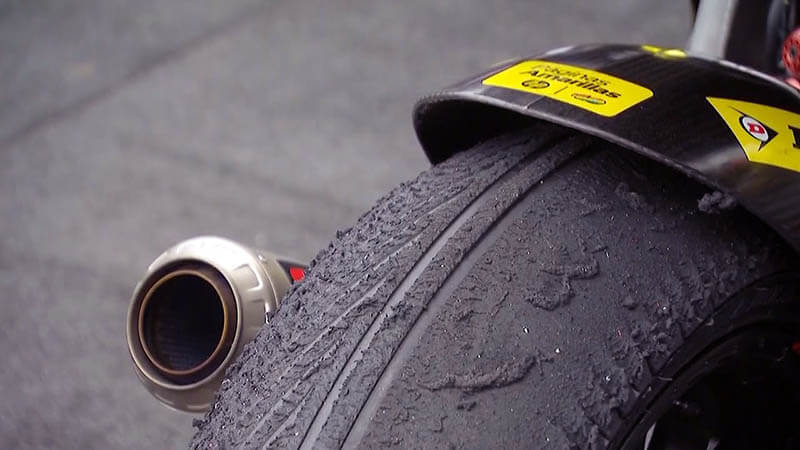
For example, if the DOT code reads DOT U2LL 5117, the tire was made by Sumitomo Rubber Industries, Japan (U2), size 245/50R16 (LL), in the 51st week (51) of the year 2017 (17). Those last four digits are the most important piece of information. Even if you bought a set of tires brand new, they may have sat in a warehouse for months or longer. Most manufacturers don’t recommend using tires that are over six years old, so these tires should be discarded after 2023, even if you can’t see any cracks. Just because a tire looks fine, the age of the tire has the final say as to whether it is still safe to use. Cars that are rarely driven (like collectible cars) can have tires that look perfect thanks to routine cleaning and treatment, but are not safe to drive with on the streets.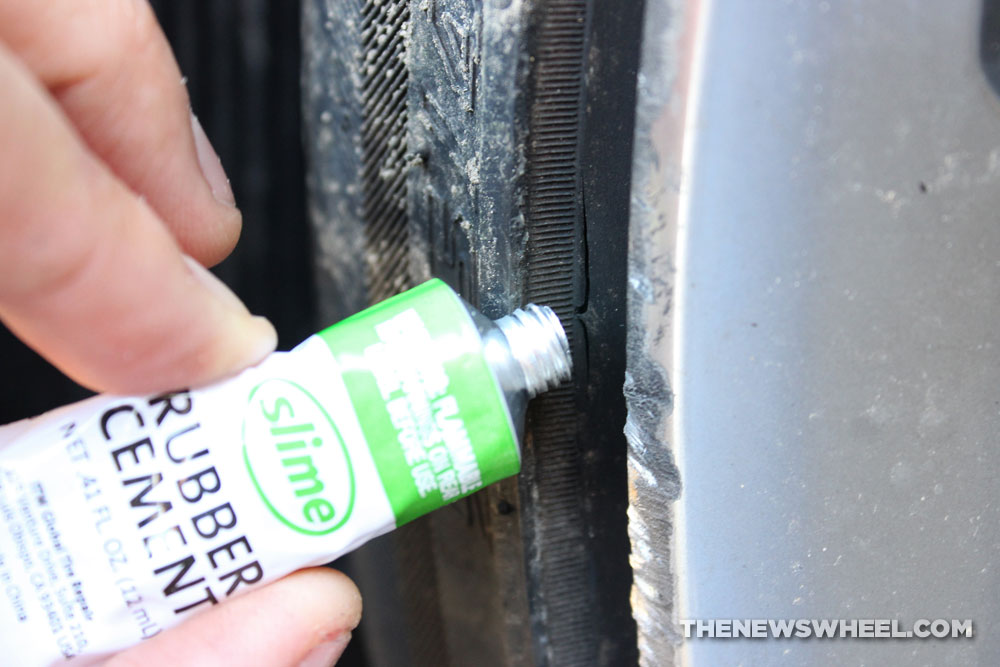
Tread wear is another reason to replace your tires. You might have heard that you can use a coin to gauge tread depth, but nothing beats a compact and easy-to-use tire tread depth gauge. Measure all the main grooves across the tread, but not on the tread wear indicators, which are 2/32″ shallower. If any measurement is below 4/32″, wet braking and snow traction are significantly impaired. At 2/32″ tread depth, wet braking distance can be nearly double that of a new tire.
Inspect tires at least monthly for pressure, age, tread wear and dry rot. Consult your local, trusted mechanic at your next oil change or during seasonal maintenance for a professional recommendation. Lastly there is no way to fix tire dry rot. Once the tire starts to deteriorate there are no magic sprays or treatments that can bring it back. The only solution for a tire that is affected by dry rot is replacement.
Check out all the tire and wheel products available on NAPAOnline or trust one of our 17,000 NAPA AutoCare locations for routine maintenance and repairs.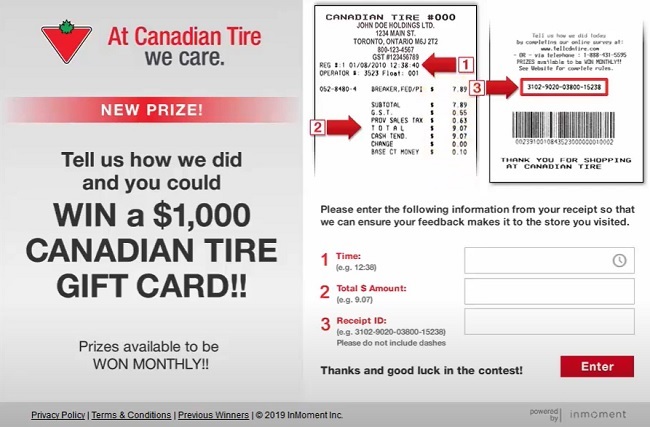 For more information on dry-rotted tires and maintaining your car tires, chat with a knowledgeable expert at your local NAPA Auto Parts store.
For more information on dry-rotted tires and maintaining your car tires, chat with a knowledgeable expert at your local NAPA Auto Parts store.
Photo courtesy of Flickr.
Categories
Know How
Tags
tire blowout, tire care, tire maintenance, tire tread depth, tire wear, tires, when to replace tires
Ben has been taking things apart since he was 5, and putting them back together again since he was 8. After dabbling in DIY repairs at home and on the farm, he found his calling in the CGCC Automobile Repair program. After he held his ASE CMAT for 10 years, Ben decided he needed a change. Now, he writes on automotive topics across the web and around the world, including new automotive technology, transportation legislation, emissions, fuel economy and auto repair.
In fact, the average life of any tire is 5-7 years, but a lot depends on how the owner treats his car. Aggressive driving, improper seasonal tire storage, unrepaired suspension/balancing problems, incorrect pressure and other errors can significantly shorten tire life. But worn tires can be a serious problem on the road: an increased risk of uncontrolled skidding, hydroplaning, even accidents is the price that drivers and passengers have to pay for using old tires. nine0003
But worn tires can be a serious problem on the road: an increased risk of uncontrolled skidding, hydroplaning, even accidents is the price that drivers and passengers have to pay for using old tires. nine0003
Each manufacturer indicates the so-called wear index on the tire profile, which most often looks like the inscription “Treadwear 100” and means a maximum of 48,000 km on a standard road surface (polygon). In a real environment and often not the most ideal roads, this number actually needs to be divided by 1.5 - we get 36,000 km.
By analogy, if the wear resistance index is 150, then this means “factory” 72 thousand km, 200 - 96 thousand km., and so on.
What are the dangers of worn tires on the road:
adhesion to the roadway deteriorates, which leads to an increased likelihood of skidding, accidents, hydroplaning in case of rainy weather;
reduced cross-country ability in off-road conditions;
increases the risk of a tire puncture while driving.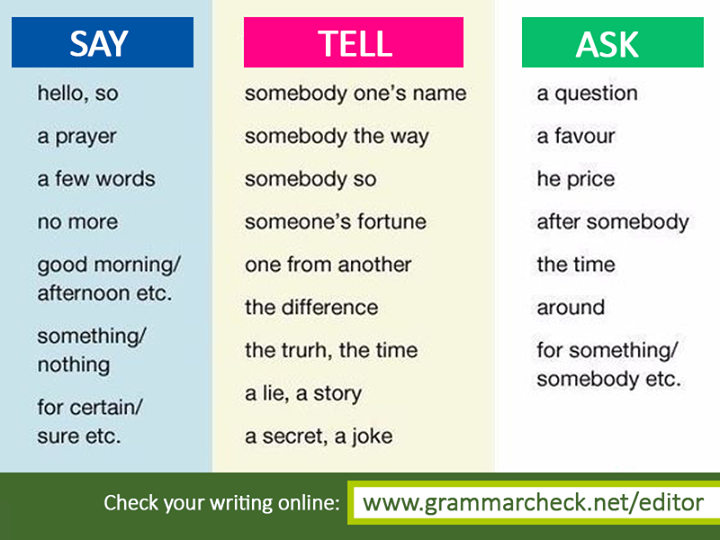 nine0003
nine0003
It is also worth remembering that the issue of tire wear is regulated by traffic rules, and you can get a fine for using “bald” rubber. Knowing what maximum tire wear is acceptable, this is easy to avoid: 1.5-2 mm for summer, and 4-5 mm for winter (a more accurate figure is indicated by the manufacturer).
1. According to the wear indicator on the tire. To find this indicator, you need to inspect the side of the tire and find one of the markings: a triangle, a company logo, a snowflake, or the abbreviation TWI. If the tread has worn down to this indicator, it means that the tire needs to be disposed of urgently. nine0003
2. Many people in the old fashioned way prefer to use a 10-kopeck coin. Insert it into the tread with the inscription "10 kopecks" towards you, and if it is visible, the wear level is too high, you need to replace the tire. This method is convenient, but not entirely accurate: by measuring wear in different parts of the tire in this way, it will be difficult to estimate its unevenness by eye, and this is also an extremely important indicator.
3. It is optimal to use a special gauge, depth ruler or caliper for these purposes. This will allow you to measure the wear of the tread in different parts of the tire with an accuracy of up to a millimeter and understand if there is uneven wear. nine0003
If measurements show different results in different parts of the tread, it is important to determine exactly how your tires wear in order to understand where and what the operating error is.
If the tread wears more on the sides and the center wears off less, this means that the tire pressure is insufficient and the contact patch with the road is not correct. This leads not only to poor vehicle stability, but also to increased fuel consumption. nine0003
If the tread is worn down the middle but the sidewalls are fine, then your tires are overinflated. Sometimes this is done intentionally in order to save fuel, but in this case, the tires will still have to be changed ahead of schedule.
There is also the possibility of increased wear on the inside or outside of the tread - this indicates an incorrect camber. A visual table with wear options and their causes:
Cracks on the sides of tires can indicate frequent off-road driving, improper storage, low-quality rubber or long service life, as well as incorrect tire pressure.
Bulges or "hernias" on the sides of the tires appear as a result of the side part hitting hard obstacles. Tires with such damage are not recommended. nine0003
Dents on the tread indicate insufficient depreciation and unadjusted camber. Having found such damage, it is necessary to drive the car to the service and make sure that the suspension is in good condition.
Individual wear spots on the tread indicate aggressive driving / braking, skidding with wheel locks, or prolonged parking of the car in one position. nine0003
nine0003
Most often, this is required for the sale and purchase of used tires in order to orient the buyer in the degree of their wear. Many sellers give this figure at random, but this method has nothing to do with the actual assessment of the degree of tire wear. It is also important to understand that a conditional 50% wear for a summer tire is an acceptable value, while 50% wear of a winter tire tread is a sign that the tire cannot be used. Therefore, it is important to know how to accurately determine the percentage of tire wear so as not to get into an unpleasant situation. nine0003
Many people divide the actual tread height by the height of the same, but new tire, and get a certain percentage of wear. This would be correct, if not for one BUT: we cannot physically erase the tread to zero, and the law prohibits the use of tires with a tread below the permitted values.
You can calculate actual tire wear by dividing the difference between the new tire height and the actual tire height by the difference between the new tire tread height and the minimum possible tread height for that tire, and then multiplying this number by 100.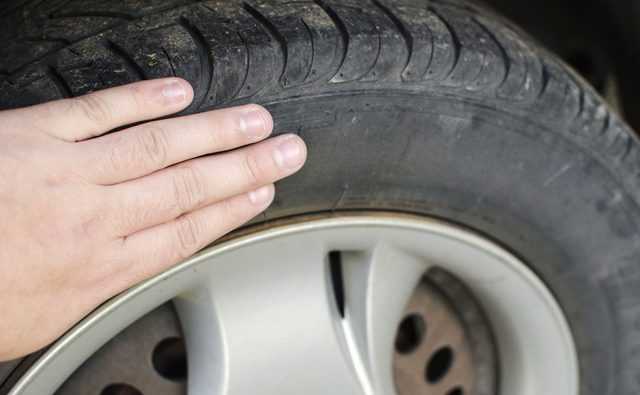 nine0003
nine0003
If it is impossible to find out the height of the same, but with a new tire, use the average values of your tire type:
| Tire type | Average tread height at start of use |
| Winter tires with Scandinavian tread | 10 mm nine0003 |
| Winter with regular or asymmetric tread | 9 mm |
| High-speed winter | 7 mm |
| Summer tires with classic tread nine0085 | 8 mm |
| Summer speed | 7 mm |
You can check summer tires for wear a little less often than winter tires, since in summer the tread depth is not so important for patency.
If you have assessed the condition of your tires on all of the above factors and realized that the tires are worn out, be sure to replace them with new ones as soon as possible. nine0003
nine0003
LADA
UAZ
KIA
Hyundai
Renault
Toyota
Volkswagen
Skoda
Nissan
BMW
BM
Mitsubishi
Mazda
Ford
All brands
This may be a technical problem or a complaint about too harsh driving style.
Many motorists look at tires briefly and for one purpose - to quickly assess visually whether a tire is flat. And those who have a more modern car, with a pressure control system, probably don’t even do that. In vain! The condition of the tread can tell a lot. And a negligent attitude will result in double losses: you will pay not only for the repair of the main malfunction, but also for dead tires. Moreover, the second item of expenditure can be many times more impressive.
A faded pattern in the center indicates overinflated tires. Reduce the pressure to the one recommended by the car manufacturer and the problem will go away. The tread, of course, will not grow, but postpone the moment of writing off the rubber.
Reduce the pressure to the one recommended by the car manufacturer and the problem will go away. The tread, of course, will not grow, but postpone the moment of writing off the rubber.
Related content
How to change the car yourself - detailed instructions
The pressure is also wrong. This time it is too low: the center "falls through", and the wheel rests on the edges. Due to the rigid sidewalls of the tire, they hold the load. nine0003
In both cases, handling and braking suffer because the tire does not have the calculated contact patch with the road. It is better to use a professional compressor. Those pressure gauges that are installed on inexpensive compressors often lie.
The easiest recipe is to visit an adjustment stand and set the camber. Settings "leave" not only after suspension work, but also from age.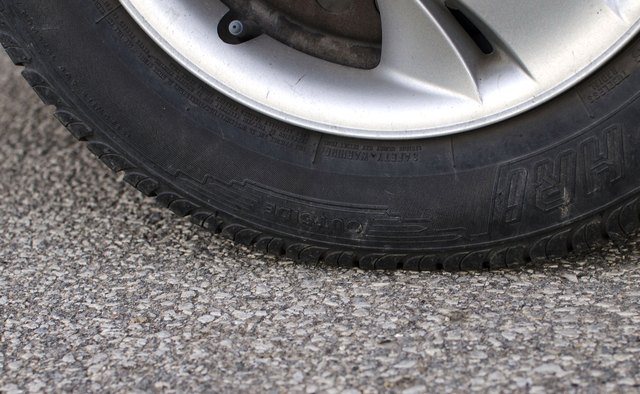 Their durability depends on the specific model and driving conditions. On a broken road, everything will happen faster. nine0003
Their durability depends on the specific model and driving conditions. On a broken road, everything will happen faster. nine0003
This type of damage indicates a violation of wheel alignment. The car drives straight and the tires are at an angle. There is no normal rotation, and the asphalt rubs the tread diagonally. Wear can be observed across the entire width of the working surface or along the edges. In the latter case, the camber angles were also knocked down.
These two types of wear can also be the result of suspension problems. It all depends on its architecture and the adjustments provided by the factory. For example, from personal experience: on the ancient Volkswagen Golf Country, wear on the inner circumference of the rear tires was cured by replacing tired springs and shock absorbers. Along with the "posture" of the car, the "gait" was automatically corrected. nine0198Wear spots and stripes, the appearance of "pits" on the tread
It is necessary to check the wheel balance, brakes and running gear.
The reason can be any of their details. But in fairness, I note that with such tire defects it is difficult not to notice deviations in the behavior of the car. In particular, in order to kill the tread by unbalancing the wheels, you need to drive with the steering wheel breaking out of your hands for more than one thousand kilometers. As a result, suspension parts will also require replacement.
We have prepared a small guide to the different types of tire wear:
However, there are other types of tire wear that are not caused by a vehicle malfunction.
Normal tire wear
Related content
7 main principles for choosing summer tires
Drivers often see the problem that tires wear evenly, but too quickly. This is not a sign of a vehicle malfunction. If only a pair of drive wheels is actively “leaving”, it is worth reconsidering the driving style. Well, or accept that “athletes” drive a car is more expensive in all aspects.
nine0003
If all four wheels wear out fast enough, you're out of luck with your tire choice. For some tires that provide excellent grip, a small resource is typical. One without the other, as you understand, is impossible. However, it happens that those tires that cannot be praised for outstanding handling or braking wear out quickly.Cracks in the tread
But this is no longer the fault of the car or the driver. In this way, the rubber hints at the fact that it was moving away. She may still have a “fat” tread, but still this is a wake-up call: you can still drive, but already look for replacement tires. It usually appears on summer tires after 5-6 years. A little later, the steering wheel beats on the go. Balancing won't help. The reason is that the load-bearing structure of the tire was deformed: a hernia got out or the cord “went like a screw”. Option one is to buy new tires. And quickly, before the imbalance leads to suspension failure. nine0003
- Top 9 most comfortable summer tires according to "Behind the wheel" version - here.
